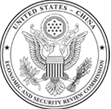×
Filter Results
Filter Results
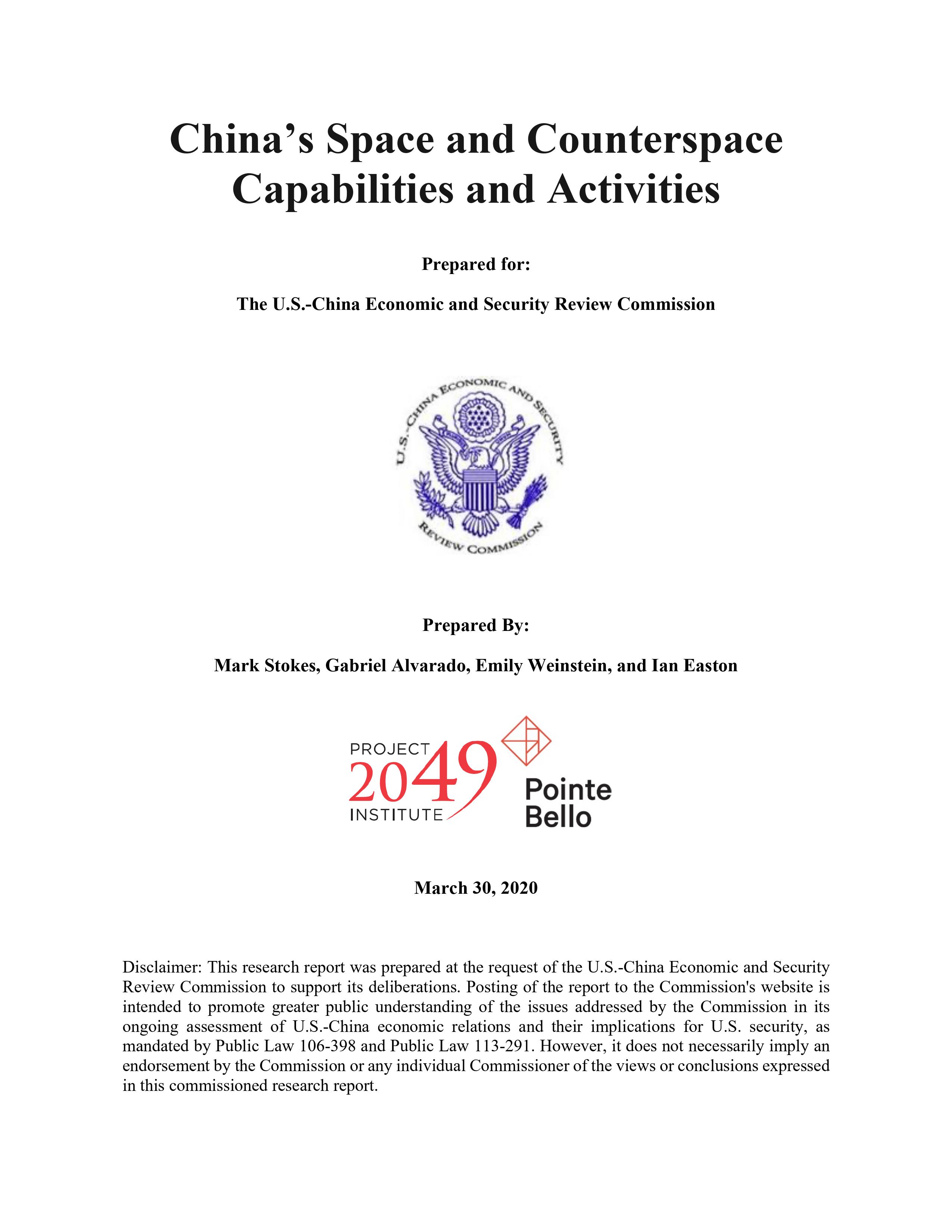
Contracted Research
The following report, "China’s Space and Counterspace Capabilities and Activities," examines China’s military and civil space programs, including the role of military-civil fusion (MCF) and international cooperation in the development of its space program.

Staff Paper
Over the last two decades, Beijing has significantly expanded its political, technological, economic, and security ties with African countries. Guiding this undertaking is Beijing’s view of Africa as a continent well-suited to China’s political governance and economic development model.
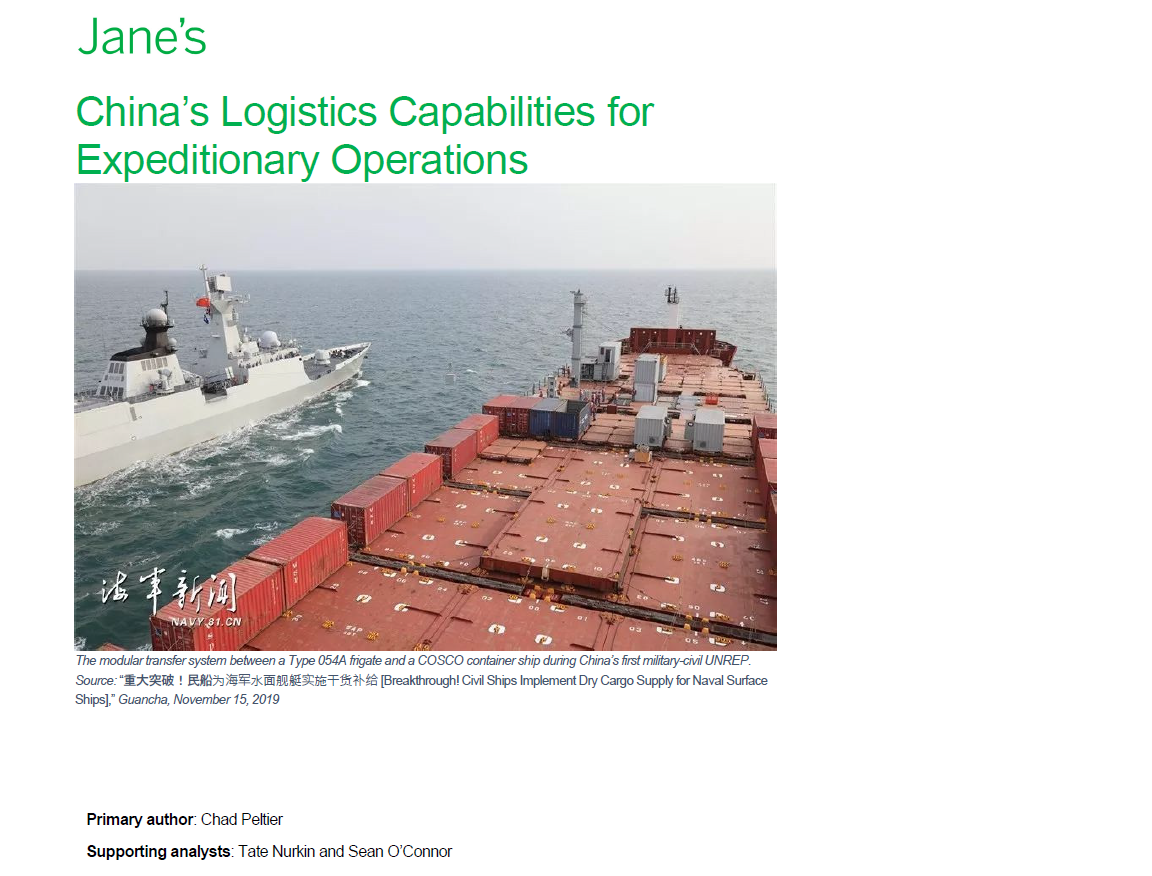
Contracted Research
The U.S.-China Economic and Security Review Commission released a report entitled China's Logistics Capabilities for Expeditionary Operations, prepared for the Commission by Jane's.
Staff Paper
Over the past two decades, the Chinese People’s Liberation Army (PLA) has expanded its involvement in humanitarian assistance and disaster relief (HA/DR) missions outside China’s borders. Through its contributions to HA/DR, Beijing has provided important assistance to disaster-stricken populations and sought to burnish its image as a “responsible stakeholder” in the international system. At the same time, Beijing routinely allows political considerations to guide its participation in HA/DR missions, violating the humanitarian spirit of these operations and suggesting Chinese leaders may view HA/DR less as a global good than an instrument of influence. Moreover, the PLA has cooperated haltingly with international partners during these missions and at times willfully disregarded best practices for military participation in HA/DR. This report examines the drivers behind the PLA’s increasing participation in HA/DR abroad; the impact, both positive and problematic, of the PLA’s involvement in several recent multinational disaster relief operations; and the implications of the PLA’s involvement in and approach to these missions for the United States.
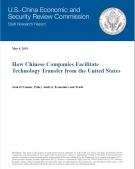
Staff Paper
Chinese companies utilize a variety of methods—many of them covert or coercive—to acquire valuable technology, intellectual property (IP), and knowhow from U.S. firms. These efforts are often made at the direction of and with assistance from the Chinese government, part of Beijing’s larger effort to develop its domestic market and become a global leader in a wide range of technologies. These acquisition attempts frequently target advanced technologies such as artificial intelligence, biotechnology, and virtual reality, which are still in the early stages of development but could provide dual military and civilian capabilities in the future.
This report explores six methods used by Chinese companies to acquire U.S. technology and IP, including (1) foreign direct investment, (2) venture capital investment, (3) joint ventures, (4) licensing agreements, (5) cyber espionage, and (6) talent acquisition programs. It then examines the effectiveness of existing U.S. regulations to assess and address the risks of increased technology transfers to China.

Staff Paper
China seeks to become an international leader in space, or what it terms a “space power in all respects.” In this role, Beijing aspires to lead international space-related innovation and exploration and establish an advanced system of infrastructure to serve its space sector. China has suffered some setbacks on projects crucial for the progression of program milestones, such as its heavy-lift launch vehicle program, and still lags behind the United States in its human spaceflight and space station program. Nevertheless, China’s space program is a source of national pride, and its consistent high level of political support and funding ensures progress toward establishing itself as a space power. In 2003, China joined the United States and Russia as a member of the exclusive group of countries to have conducted human spaceflight, and since then it has nearly completed a new, rival global navigation satellite system (GNSS)—set for completion in 2020—and demonstrated its willingness to undertake high-risk, high-reward missions, as reflected by its historic landing on the moon’s far side in 2019. China is likely to achieve future milestones in areas where it is lagging behind international standards on shorter timetables than when the United States accomplished similar missions.
This report examines China’s space goals and national space strategy; its progress toward those goals, including an examination of China’s progress in its advanced launch vehicle, long-term crewed space station, and lunar exploration programs; and the primary entities involved in setting and implementing its space policy. Finally, the report assesses the implications of China’s space program for the United States and its continued leadership in space.
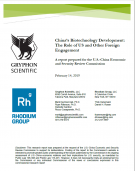
Contracted Research
The U.S.-China Economic and Security Review Commission released a report entitled China’s Biotechnology Development: The Role of U.S. and Other Foreign Engagement, prepared for the Commission by Gryphon Scientific and Rhodium Group. The report examines the development of China’s biotechnology industry and the role foreign trade, investment, and other linkages—particularly with the United States—have played in its evolution.
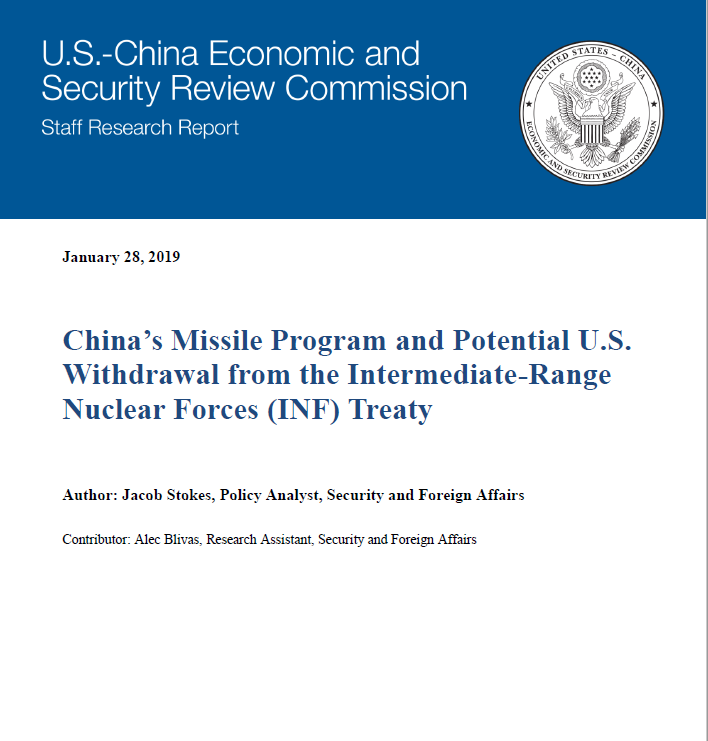
Staff Paper
The Trump Administration cited China as a major reason behind its decision to announce U.S. intentions to withdraw from the 1987 Intermediate-Range Nuclear Forces (INF) Treaty with Russia. China is not a party to the INF Treaty, which has allowed Beijing to rapidly expand its missile arsenal as part of a military strategy designed to counter U.S. and allied military power in Asia. China has consistently refused to accede to the accord and expressed its opposition to U.S. withdrawal, positions that implicitly recognize the advantages Beijing derives from being unconstrained by the treaty’s limits. This report explains the importance of China’s ground-launched missiles to Beijing’s overall military strategy; surveys Chinese reactions to the potential U.S. withdrawal from the INF Treaty; and assesses both the positive and negative implications of U.S. withdrawal for the military balance in Asia, global arms control regime, U.S. relations with Asian allies, and China-Russia ties.
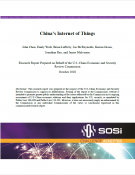
Contracted Research
The Internet of Things (IoT)—the interconnection of physical and virtual things via information and communication technologies—is being applied to virtually every sector from smart thermostats in households to swarms of autonomous drones in the battlefield. This report, contracted by the USCC and authored by SOS International, outlines China’s state-led approach to IoT development, assesses the implications for the U.S. economy, national security, and the privacy of U.S. data, and makes recommendations for U.S. policymakers. China’s concerted, state-led approach, including ongoing efforts to influence international IoT standards, has put China in a position to credibly compete against the United States and other leaders in the emerging IoT industry. China’s research into IoT security vulnerabilities and its growing civil-military cooperation raise concerns about gaining unauthorized access to IoT devices and sensitive data. In addition, China’s authorized access to the IoT data of U.S. consumers will only grow as Chinese IoT companies leverage their advantages in production and cost to gain market share in the United States based on the terms of use and sweeping Chinese government data access powers.

Staff Paper
The United States maintains close cultural, economic, and security ties with countries in Latin America and the Caribbean (LAC). While the United States remains the largest economic and security partner in LAC, in the last decade China has rapidly deepened its economic, diplomatic, and military engagement to become the region’s largest creditor and second-largest trading partner. China’s efforts in the region are driven by four key objectives: (1) ensuring its access to the region’s abundant natural resources and consumer markets; (2) gaining LAC support for its foreign policies; (3) shaping LAC perceptions and discourse about China; and (4) gaining geopolitical influence in a region geographically close and historically subject to U.S. influence. Closer ties with China may reduce U.S. influence in the region; they can also reinforce the region’s overreliance on highly cyclical exports and create unsustainable debt burdens for some LAC countries, which China could use for political leverage. This report examines China’s objectives in the region, its economic, diplomatic, and military and security engagement in Latin America and the Caribbean, and the implications of its expanding regional presence and influence for the United States.
